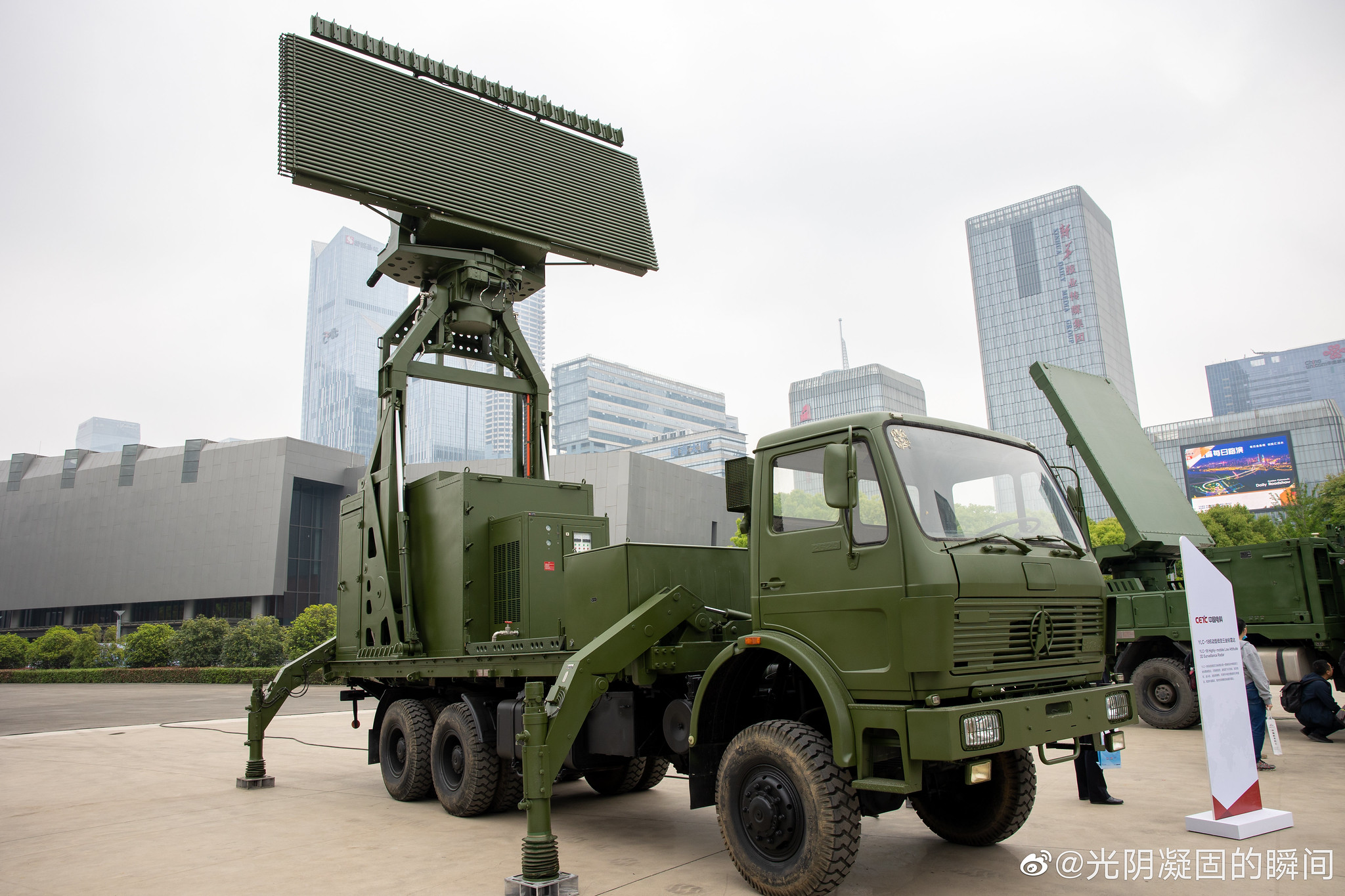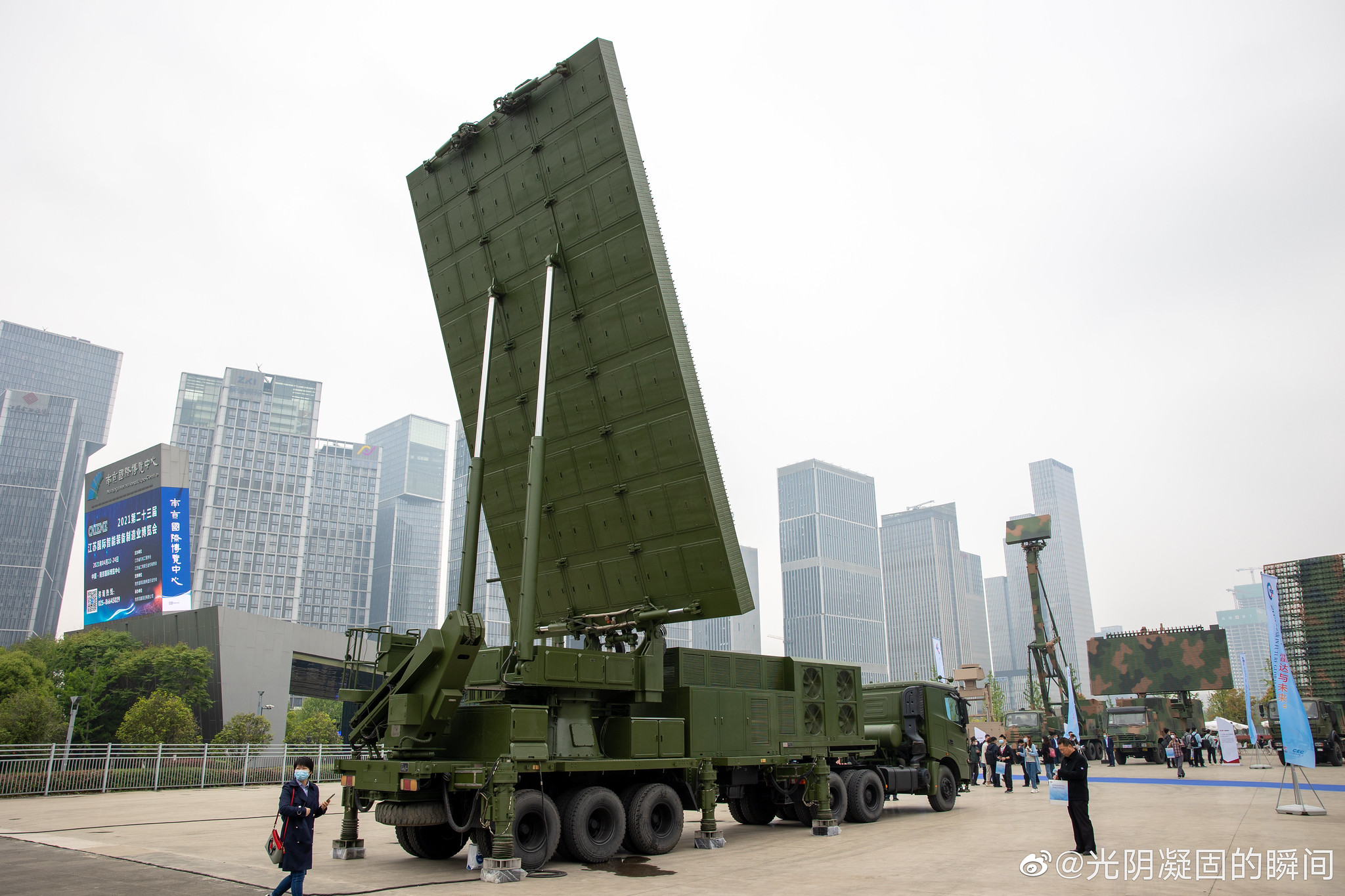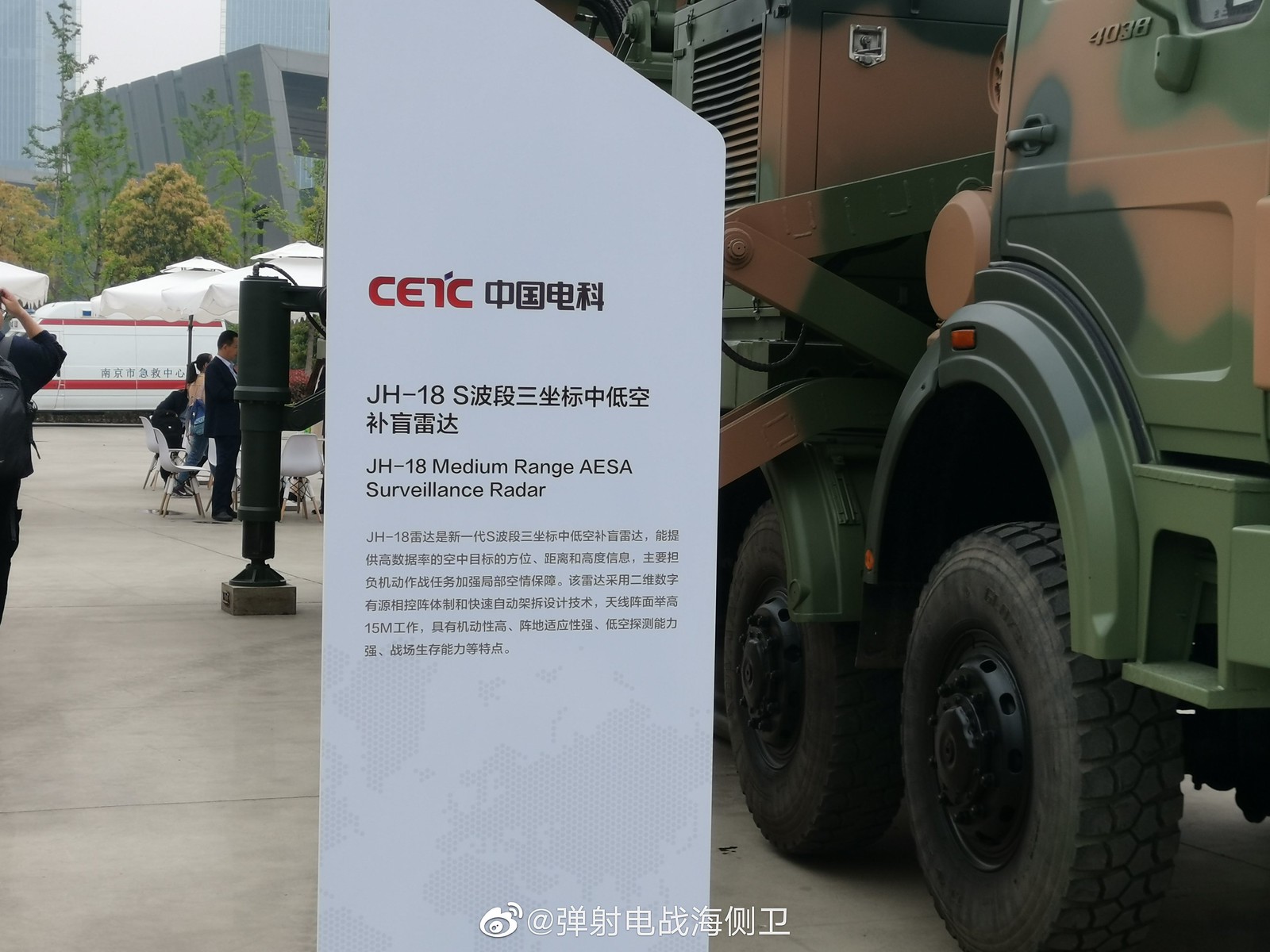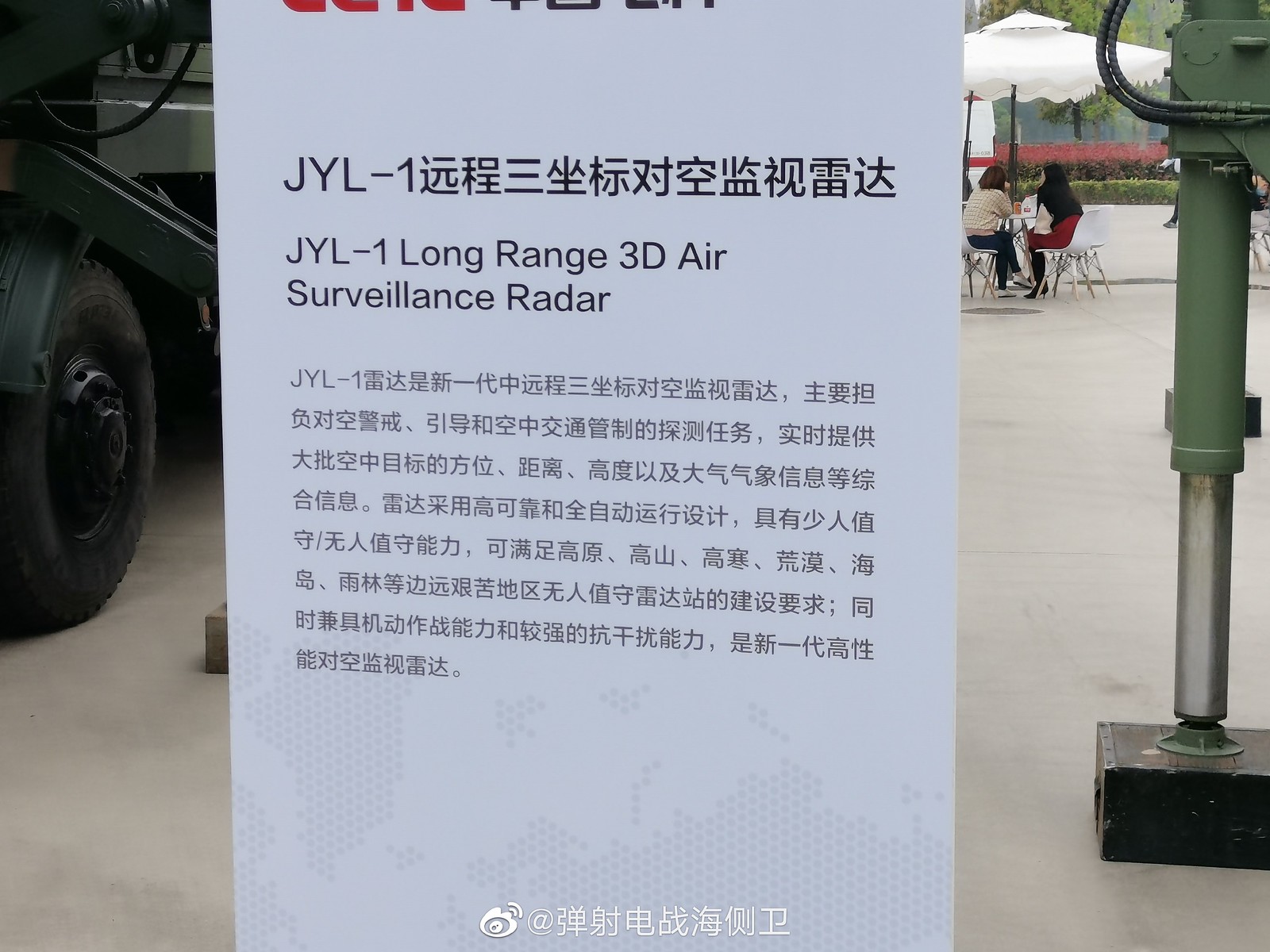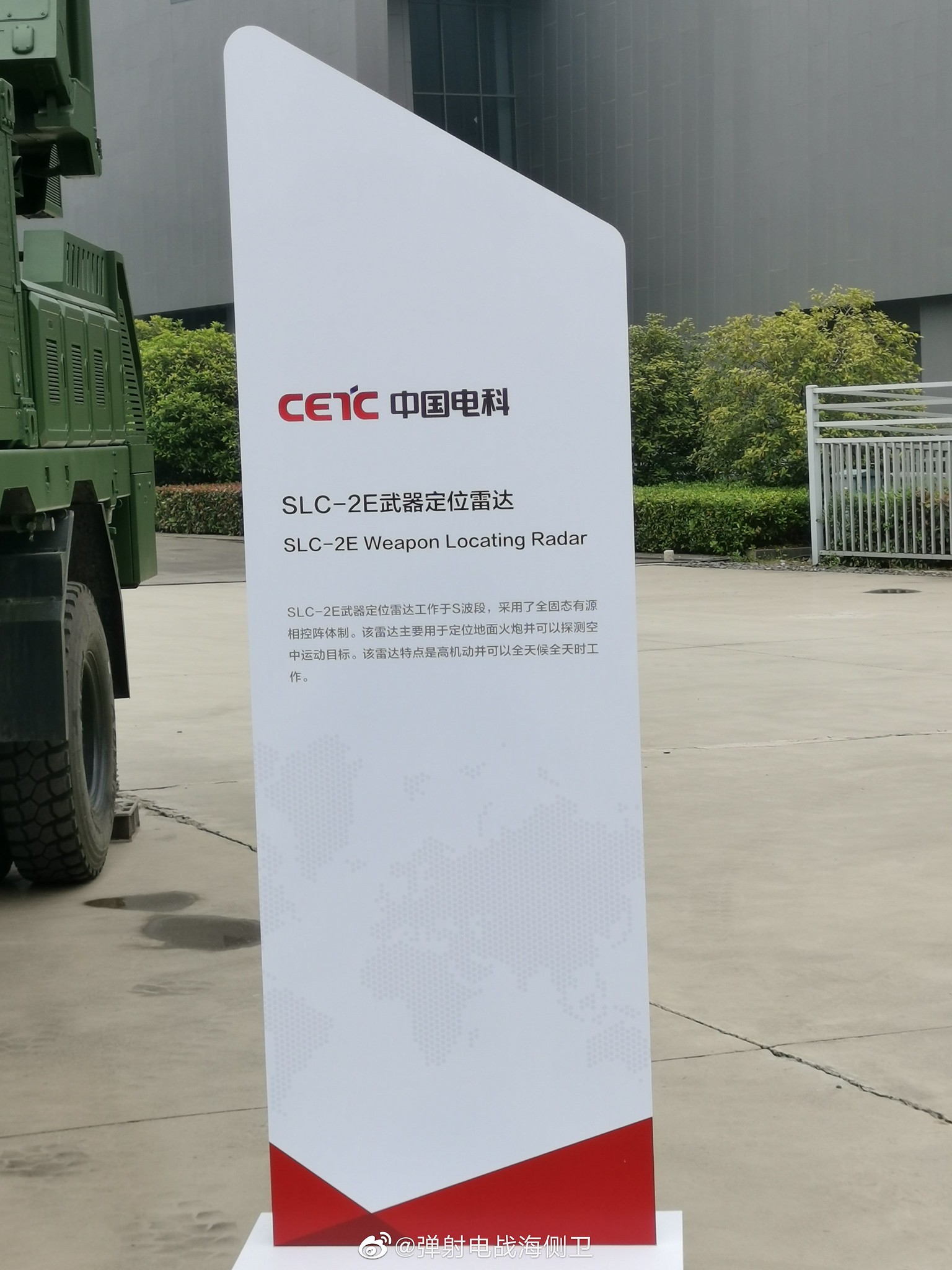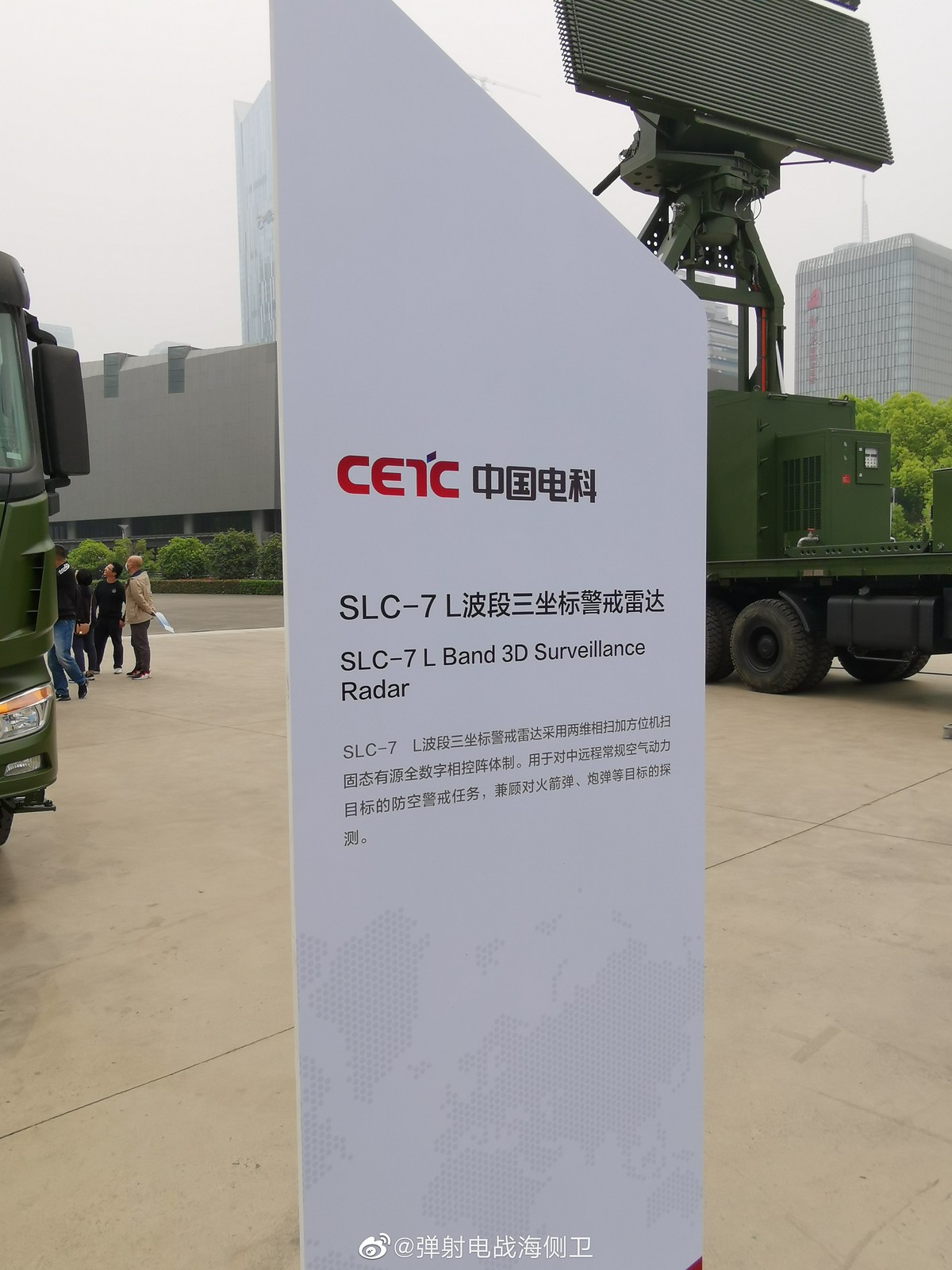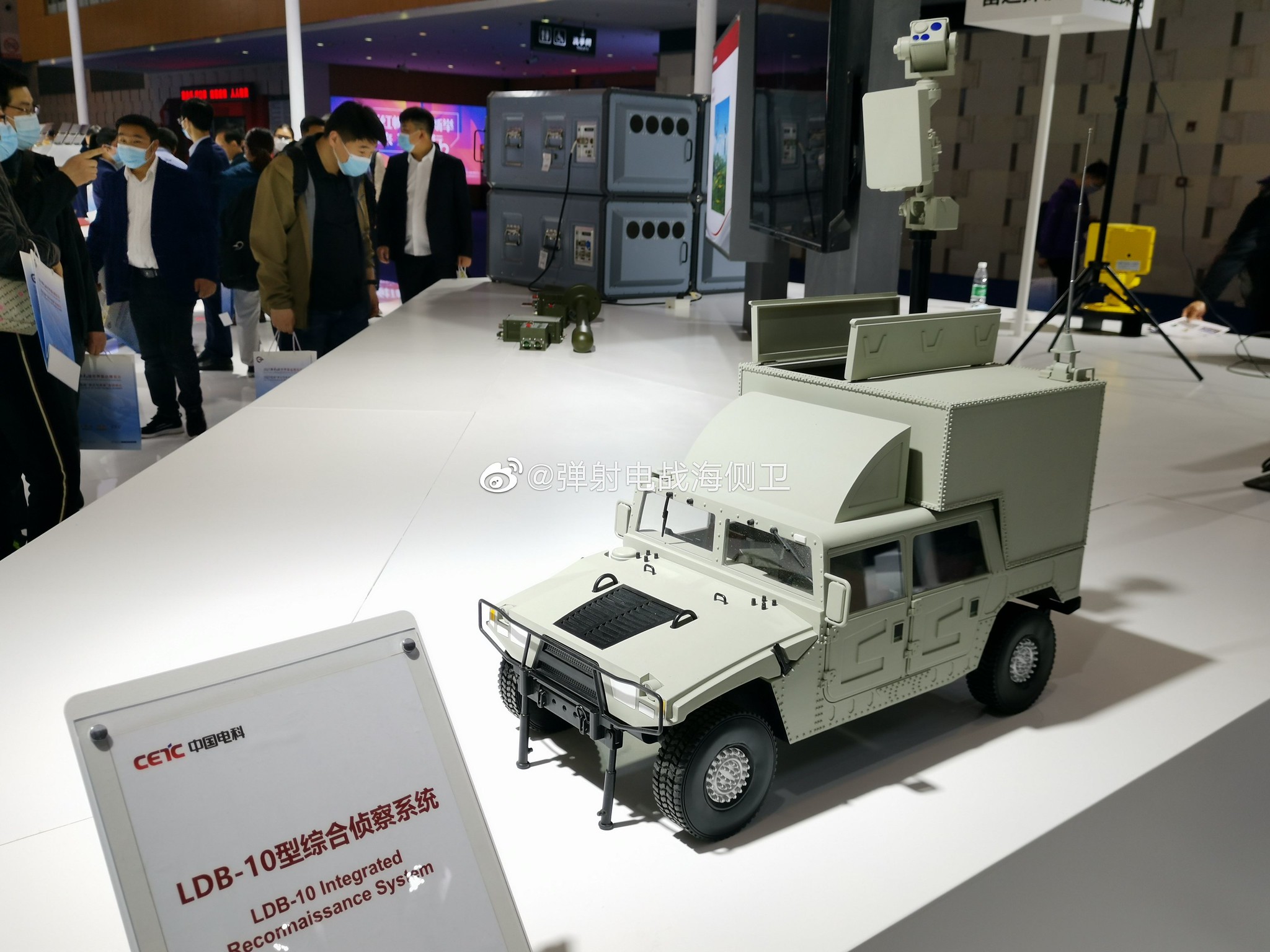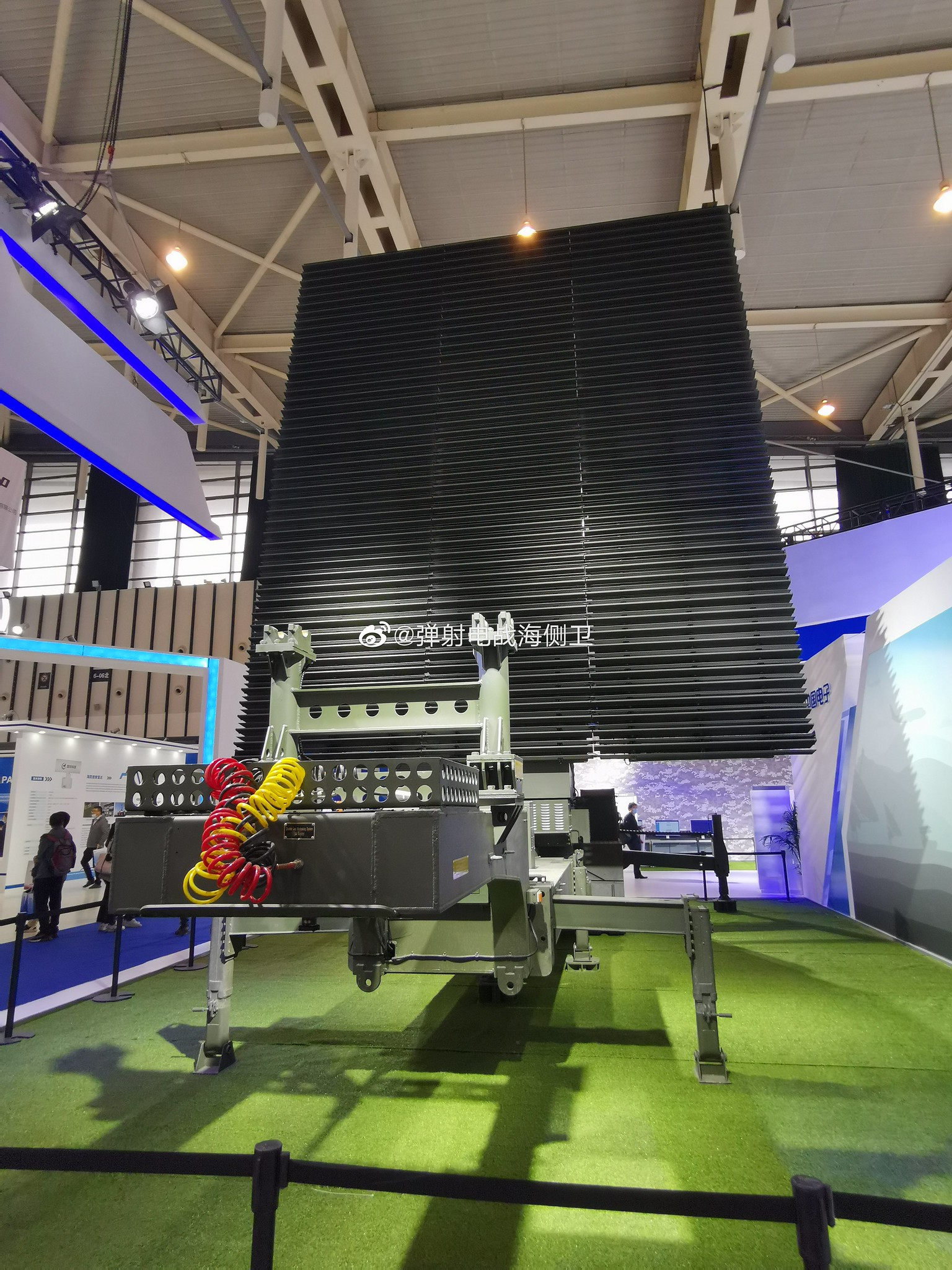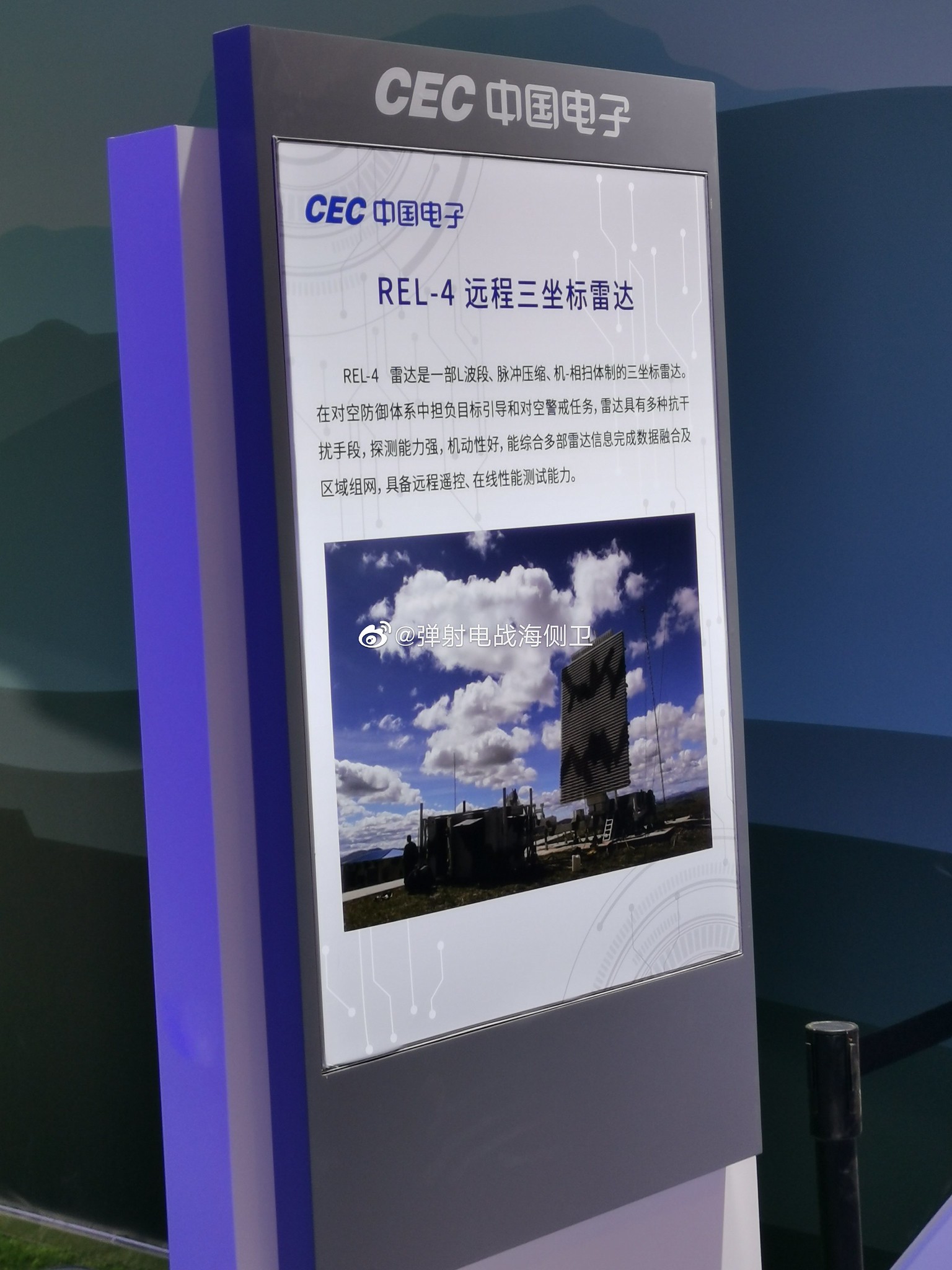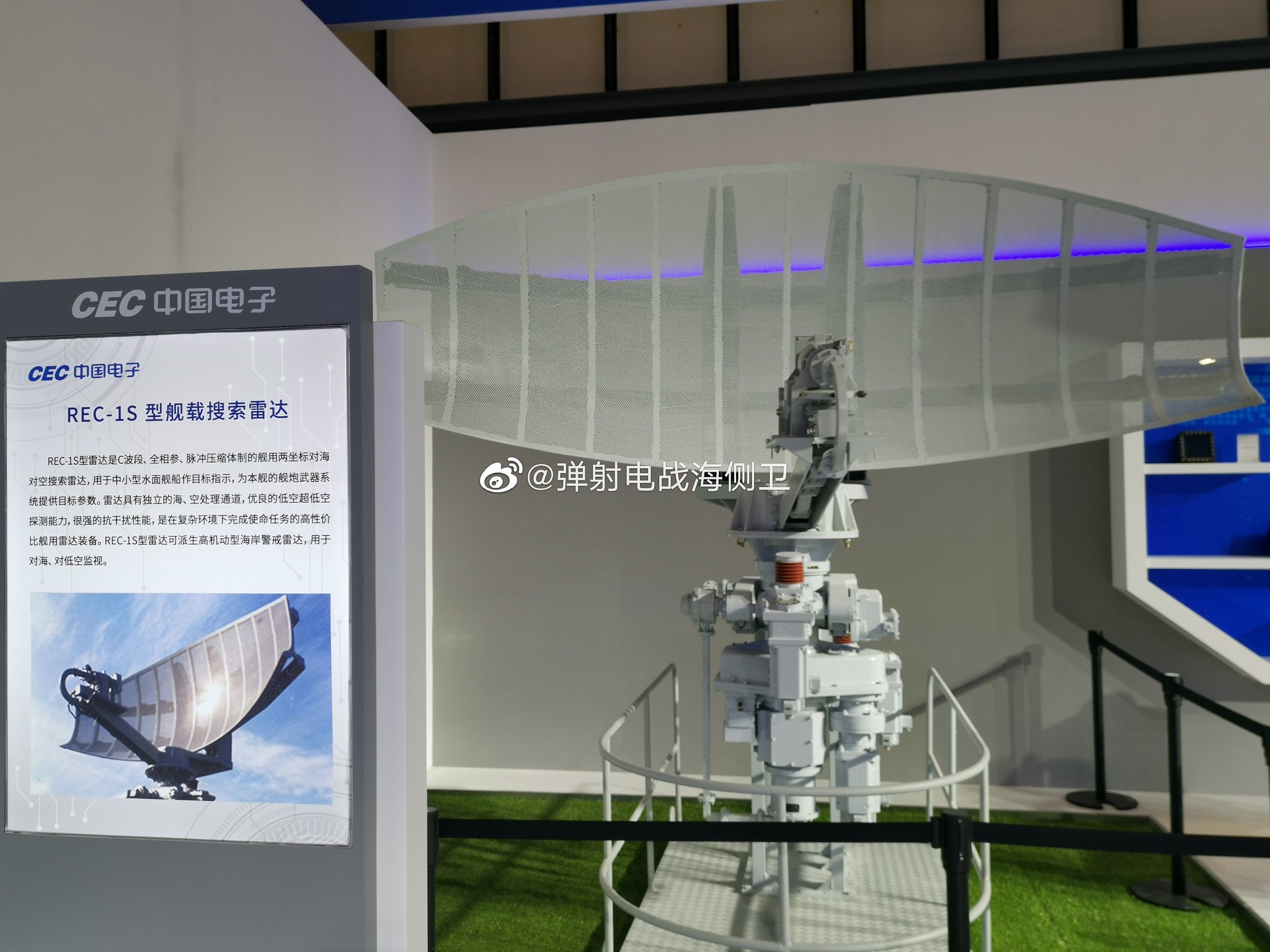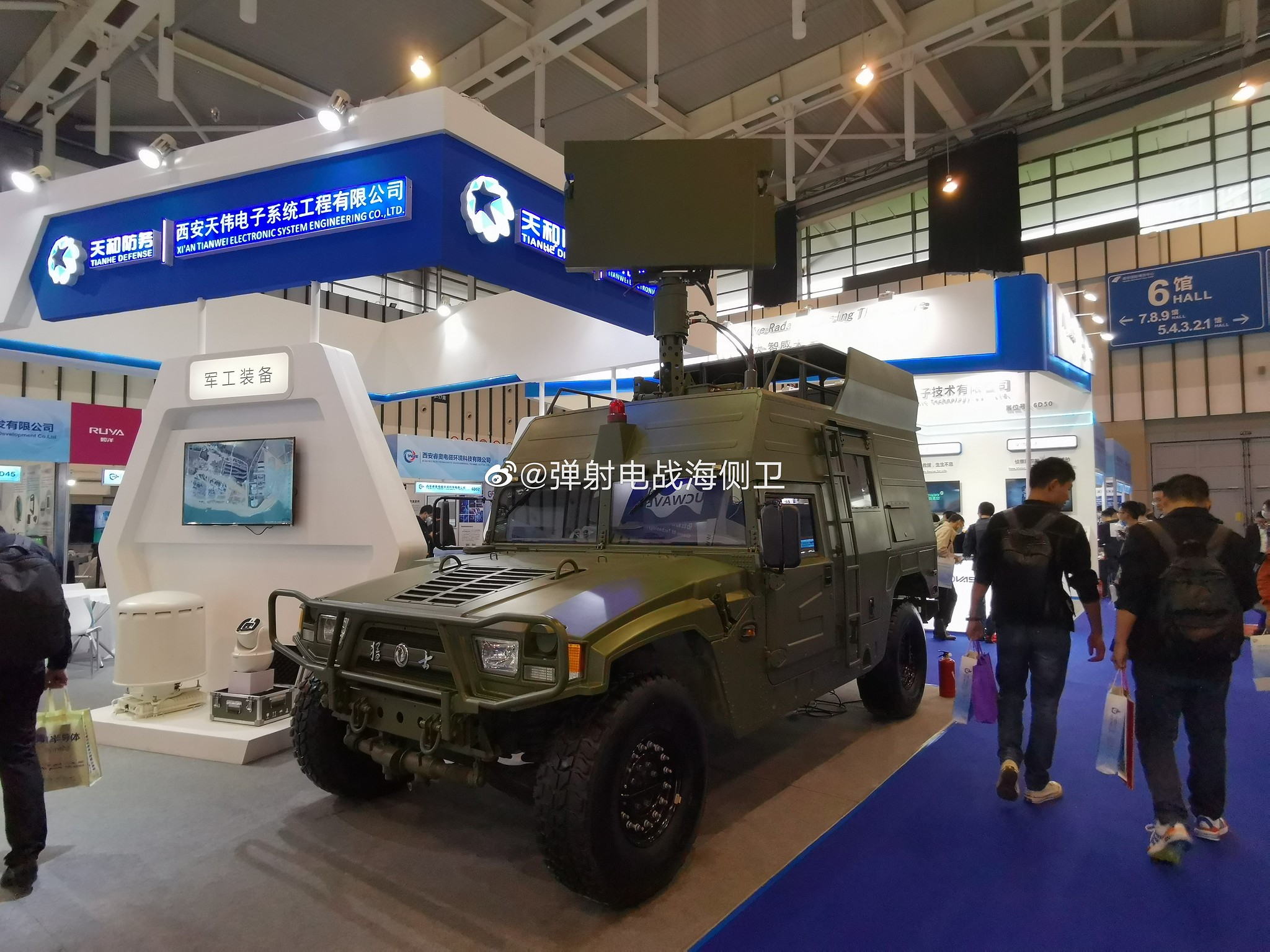You are using an out of date browser. It may not display this or other websites correctly.
You should upgrade or use an alternative browser.
You should upgrade or use an alternative browser.
Chinese Radar Developments - KLJ series and others
- Thread starter indochina
- Start date
Hendrik_2000
Lieutenant General
From GT. Interesting that they now reveal the institute role in Korean war and how advance Chinese radar even back then
Chinese developed flagship anti-stealth radar’s key performances superior to foreign counterparts: top radar scientist
AI tech expected to enhance operational efficiency
By
and
in NanjingPublished: Apr 24, 2021 12:34 PM
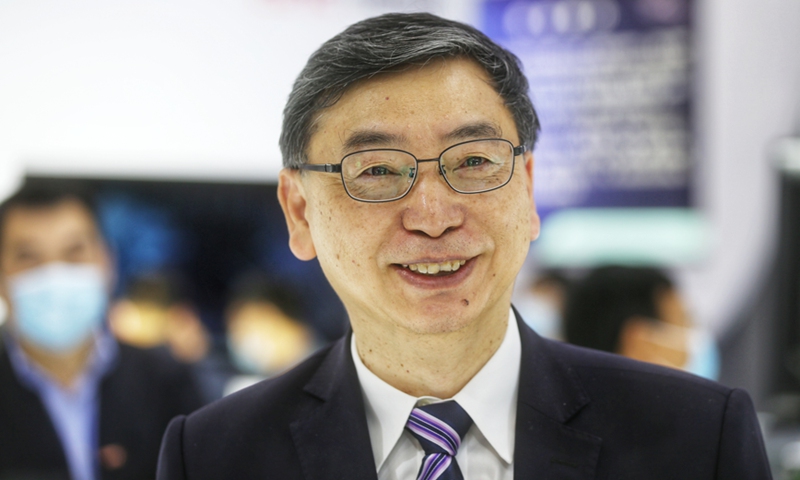
Hu Mingchun, director of the No.14 Research Institute under China Electronics Technology Group Co, talks to the Global Times in an exclusive interview on the sidelines of the 9th World Radar Expo in Nanjing, East China’s Jiangsu Province, on April 22, 2021. Photo: Cui Meng/GT
The development of China's radar equipment is on par with the most advanced level in the world, and the development of artificial intelligence (AI) technologies could bring important changes to the radar industry in the future, as their applications could significantly enhance operational efficiency of radar systems, a top Chinese scientist in the radar industry said.
Hu Mingchun, director of the No.14 Research Institute at the state-owned China Electronics Technology Group Co, made the statements in an exclusive interview with the Global Times on the sidelines of the 9th World Radar Exo held in Nanjing, capital of East China's Jiangsu Province on Friday, as he introduced star items the research institute brought to the exhibition, including like the SLC-7 L-band 3D surveillance radar system and YLC-8E UHF-band 3D surveillance radar system as well as like YLC-48 portable multipurpose reconnaissance radar.
The antenna of the YLC-8E is gigantic. With its high power and cutting-edge information process technology, it can detect even the most advanced stealth aircraft. It can also detect other types of targets at long range and high definition with its key parameters superior to foreign competitors.
The SLC-7, on the other hand, can take on even more types of targets making it much more versatile than many other competing products.
Previous radar systems often had dedicated functions, but this versatile radar can not only detect stealth targets but also be used in fields like early warning and artillery reconnaissance. This means this radar alone can serve the purpose of multiple radars operating at the same time, Hu said.
Dubbed the terminator of drones, the YLC-48 portable multifunctional reconnaissance radar has outstanding ability to detect low-altitude, small and slow targets. It adopts the domestic pioneering circular digital phased array system and thanks to the wide use of digital integrated circuits, the radar is small, light and mobile, making it suitable for all kinds of lightweight weapons platforms, for all-weather operations with rapid deployment and withdrawal.
Low-altitude, small and slow targets like drones pose many threats to air defense, as they have become some of the major killing weapons in real combat, Hu said, noting that as drones have also become easily accessible to normal people, incidents involving unauthorized flying of drones are also becoming frequent.
"That is why we are bringing radar systems specially designed to deal with low-altitude, small and slow targets," Hu said.
China's radars are on par with their most advanced counterparts in the world, and this is because China's latest achievements in the electronics and information industry were all immediately reflected into the country's radar equipment at first time, Hu said.
"In some fields, China have already been in the leading place, because we are now on the path of independent research and development, and we do not have anything to make reference to," Hu told the Global Times.
The fire control radar equipped on the China-Pakistan jointly developed JF-17 fighter jet is already at the most advanced level in the world, while the likes of China's anti-stealth radar installations, the "Chinese Aegis" ship-borne radar systems and the airborne radar on the KJ-2000 early warning aircraft can all rival their cutting-edge foreign counterparts, according to Hu.
This year marks the 100th anniversary of the founding of the Communist Party of China (CPC). Hu said that the history of radar development in China is a miniature of the history of struggle under the leadership of the CPC.
According to Hu, the radar industry has played an important role in every stage of China's development. After the founding of the People's Republic of China, the No.14 Research Institute provided all the radar equipment for the War to Resist US Aggression and Aid Korea (1950-53), which laid a foundation for the eventual victory. When the US warplanes took off, China's radar could detect them in time and arrange anti-aircraft artillery and fighter jets to intercept them.
"Not long ago, when the country issued commemorative medals for those who fought in the war, many in our institute got the medals," Hu told the Global Times.(cont)
Chinese developed flagship anti-stealth radar’s key performances superior to foreign counterparts: top radar scientist
AI tech expected to enhance operational efficiency
By
and
in NanjingPublished: Apr 24, 2021 12:34 PM

Hu Mingchun, director of the No.14 Research Institute under China Electronics Technology Group Co, talks to the Global Times in an exclusive interview on the sidelines of the 9th World Radar Expo in Nanjing, East China’s Jiangsu Province, on April 22, 2021. Photo: Cui Meng/GT
The development of China's radar equipment is on par with the most advanced level in the world, and the development of artificial intelligence (AI) technologies could bring important changes to the radar industry in the future, as their applications could significantly enhance operational efficiency of radar systems, a top Chinese scientist in the radar industry said.
Hu Mingchun, director of the No.14 Research Institute at the state-owned China Electronics Technology Group Co, made the statements in an exclusive interview with the Global Times on the sidelines of the 9th World Radar Exo held in Nanjing, capital of East China's Jiangsu Province on Friday, as he introduced star items the research institute brought to the exhibition, including like the SLC-7 L-band 3D surveillance radar system and YLC-8E UHF-band 3D surveillance radar system as well as like YLC-48 portable multipurpose reconnaissance radar.
The antenna of the YLC-8E is gigantic. With its high power and cutting-edge information process technology, it can detect even the most advanced stealth aircraft. It can also detect other types of targets at long range and high definition with its key parameters superior to foreign competitors.
The SLC-7, on the other hand, can take on even more types of targets making it much more versatile than many other competing products.
Previous radar systems often had dedicated functions, but this versatile radar can not only detect stealth targets but also be used in fields like early warning and artillery reconnaissance. This means this radar alone can serve the purpose of multiple radars operating at the same time, Hu said.
Dubbed the terminator of drones, the YLC-48 portable multifunctional reconnaissance radar has outstanding ability to detect low-altitude, small and slow targets. It adopts the domestic pioneering circular digital phased array system and thanks to the wide use of digital integrated circuits, the radar is small, light and mobile, making it suitable for all kinds of lightweight weapons platforms, for all-weather operations with rapid deployment and withdrawal.
Low-altitude, small and slow targets like drones pose many threats to air defense, as they have become some of the major killing weapons in real combat, Hu said, noting that as drones have also become easily accessible to normal people, incidents involving unauthorized flying of drones are also becoming frequent.
"That is why we are bringing radar systems specially designed to deal with low-altitude, small and slow targets," Hu said.
China's radars are on par with their most advanced counterparts in the world, and this is because China's latest achievements in the electronics and information industry were all immediately reflected into the country's radar equipment at first time, Hu said.
"In some fields, China have already been in the leading place, because we are now on the path of independent research and development, and we do not have anything to make reference to," Hu told the Global Times.
The fire control radar equipped on the China-Pakistan jointly developed JF-17 fighter jet is already at the most advanced level in the world, while the likes of China's anti-stealth radar installations, the "Chinese Aegis" ship-borne radar systems and the airborne radar on the KJ-2000 early warning aircraft can all rival their cutting-edge foreign counterparts, according to Hu.
This year marks the 100th anniversary of the founding of the Communist Party of China (CPC). Hu said that the history of radar development in China is a miniature of the history of struggle under the leadership of the CPC.
According to Hu, the radar industry has played an important role in every stage of China's development. After the founding of the People's Republic of China, the No.14 Research Institute provided all the radar equipment for the War to Resist US Aggression and Aid Korea (1950-53), which laid a foundation for the eventual victory. When the US warplanes took off, China's radar could detect them in time and arrange anti-aircraft artillery and fighter jets to intercept them.
"Not long ago, when the country issued commemorative medals for those who fought in the war, many in our institute got the medals," Hu told the Global Times.(cont)
Recap on some of the systems above.
The S-band unit here is the one used on the 054A/P. You know got some numbers to chew on, 250km for a 2m2 RCS fighter sized target. This looks like a whole family of naval radars across different bands. Is the X-band unit here the one used on the C13B?

Unit here used on the Jari USV. An interesting feature is that it has microwave ducting for over the horizon.

This one I recognized as the unit used on the Type 056 corvette family, but also used in other ships, such as the Type 901 AOE. It is C-band, fully coherent, using pulse compression, meant for low to ultra low altitude search.

The S-band unit here is the one used on the 054A/P. You know got some numbers to chew on, 250km for a 2m2 RCS fighter sized target. This looks like a whole family of naval radars across different bands. Is the X-band unit here the one used on the C13B?

Unit here used on the Jari USV. An interesting feature is that it has microwave ducting for over the horizon.

This one I recognized as the unit used on the Type 056 corvette family, but also used in other ships, such as the Type 901 AOE. It is C-band, fully coherent, using pulse compression, meant for low to ultra low altitude search.


